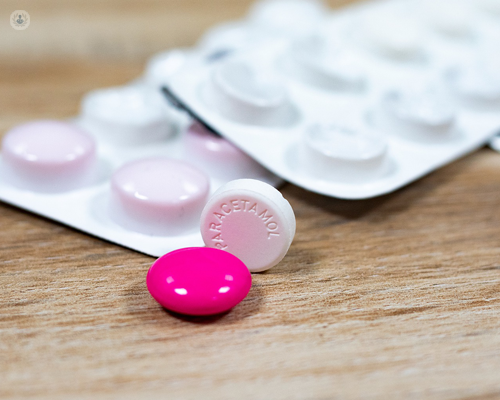Adenomyosis
Mr Mahantesh Karoshi - Obstetrics & gynaecology
Created on: 04-17-2018
Updated on: 04-26-2023
Edited by: Karolyn Judge
What is adenomyosis?
Adenomyosis is condition in which the uterine lining (the endometrium) protrudes through the muscle wall of the uterus (the myometrium). As a result, the person suffering from adenomyosis can experience discomfort and have problems with menstruation. This is not a life-threatening condition and it is considered benign. However, the symptoms can have a significantly negative effect on the quality of life of those with it.

What are the symptoms of adenomyosis?
Although sometimes there are no symptoms experienced with adenomyosis, common adenomyosis symptoms include:
- Painful menstrual cramps
- Abdominal bloating
- Heavy, prolonged menstrual bleeding
- Pain during intercourse
- Blood clots which pass during menstruation
- Enlarged uterus
Normally, symptoms are first noticed after having children, or if not, in the later childbearing years.
What causes adenomyosis?
The cause of adenomyosis is unknown, however, it typically goes away after menopause, which suggests that the cause is hormone related.
Does adenomyosis cause a big belly?
One of the symptoms of adenomyosis is that the uterus can become enlarged. You may feel tender in your lower abdomen, or pressure in the area.
What are the chances of getting pregnant if I have adenomyosis?
Generally, adenomyosis doesn't result in infertility but in painful periods, heavy menstrual bleeding and the symptoms mentioned above. There's no definite evidence that this condition affects the ability to get pregnant or carry a pregnancy to term.

What's the difference between adenomyosis and endometriosis?
Adenomyosis and endometriosis share similarities and have various differences. They are both disorders of the uterine lining, but they develop differently and have symptoms that are different to one another.
In endometriosis: The endometrial-like tissue that grows outside of the uterus is commonly found on the ovaries. It then becomes part of the menstrual cycle and may cause pain and affect fertility.
In adenomyosis: Endometrial-like cells grow within the uterus' muscles. These cells also follow the menstrual cycle and may cause pain and heavy bleeding due to the uterus wall thickening. You can have both disorders at the same time.
How is adenomyosis treated?
As adenomyosis usually goes away after menopause, treatment options depend on how old you are or if you have finished having children. For women nearing menopause, anti-inflammatory medications such as ibuprofen can be given to help manage pain. If these are taken in the days leading up to menstruation, bleeding should be lighter. Milder symptoms can be dealt with using over-the-counter pain relief and heat packs to help with cramps. Certain hormone contraceptives can also sometimes help with symptoms of heavy bleeding and cramps.

Endometrial ablation, which destroys uterine lining can help manage symptoms as well. Uterine artery embolisation, which blocks certain blood vessels leading to the uterine lining can help relieve pain, too. This is because the blood supply gets cut off from the affected area, which shrinks the uterine lining as a result.
Finally, if the pain experienced is severe, and menopause is a long way off, sometimes a hysterectomy will be recommended. However, this is a serious decision that only an expert would recommend on careful consideration.
Which specialist treats adenomyosis?
Gynaecologists treat adenomyosis. It's very important to receive expert attention, so the difference between endometriosis and adenomyosis is established.















